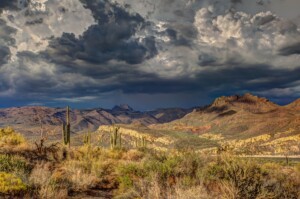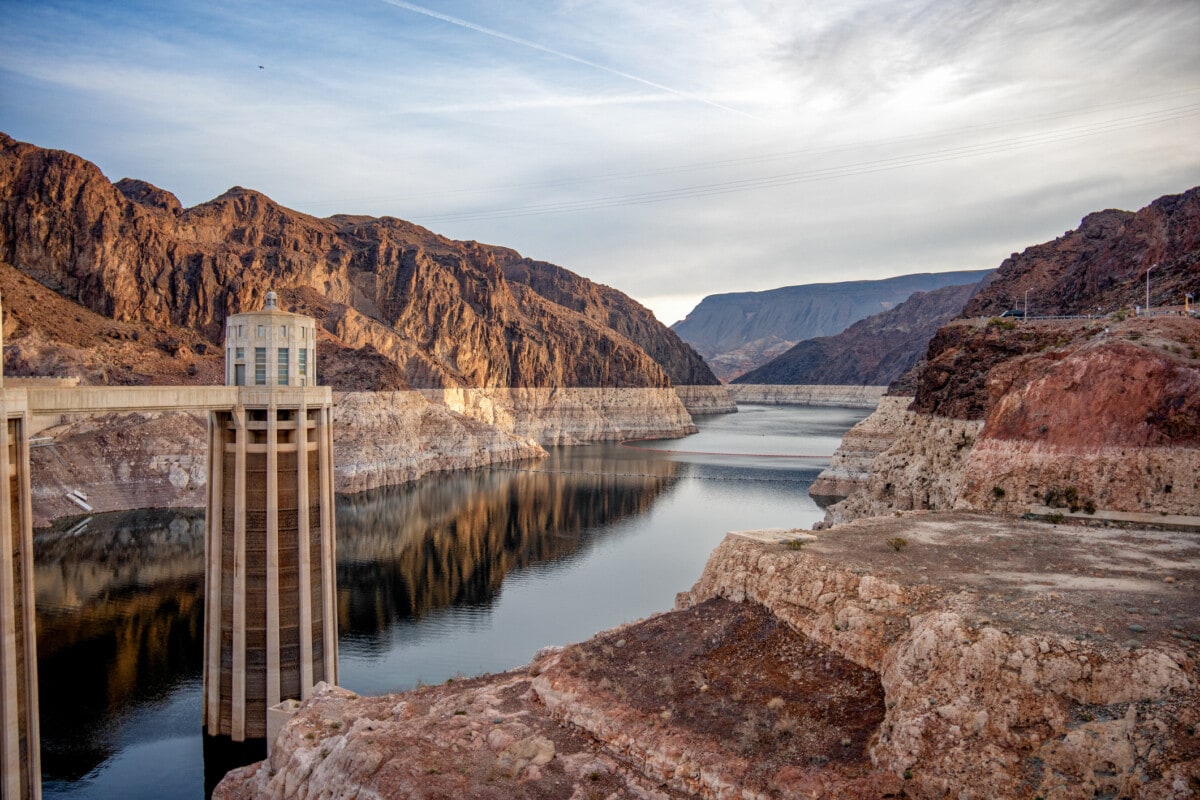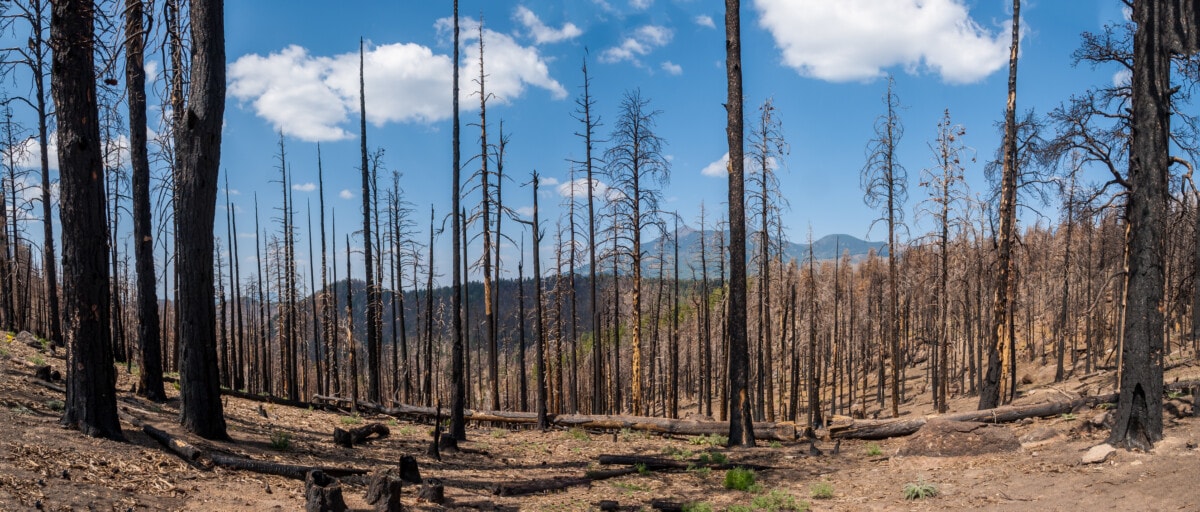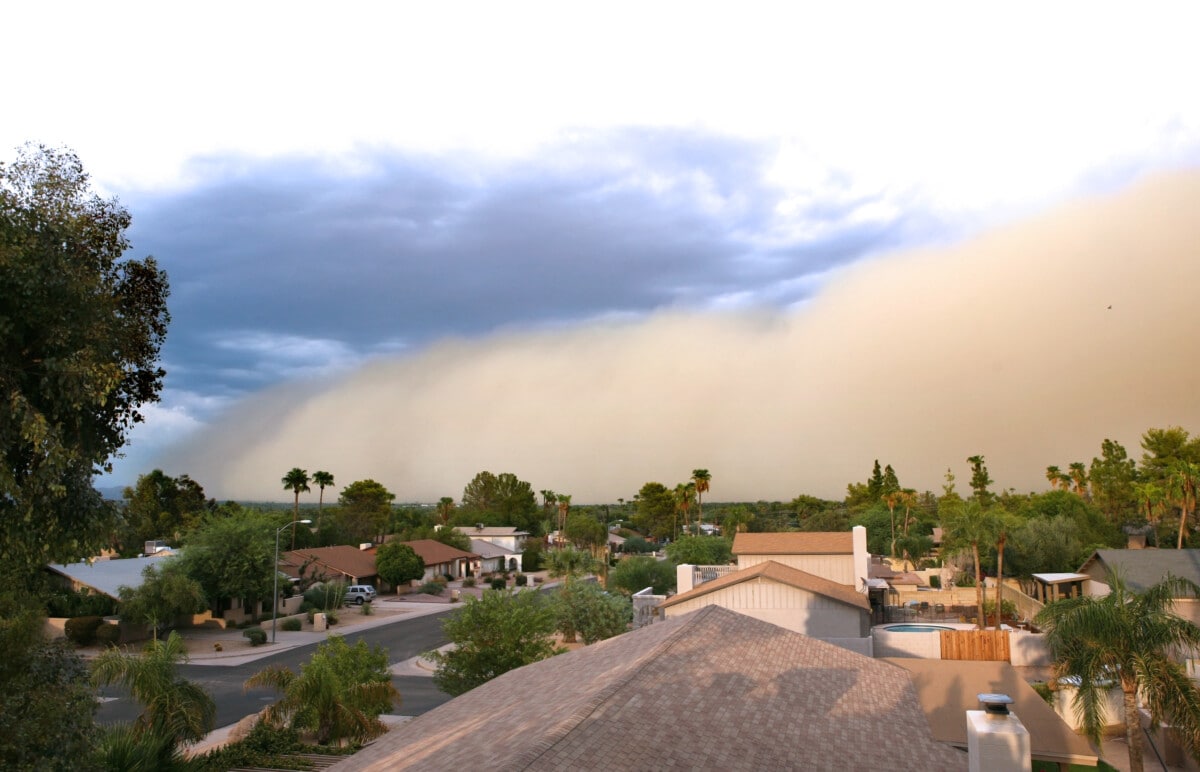Natural Disasters in Arizona: What Homeowners and Renters Need to Know

Arizona is known for its dry, warm weather and scenic desert vistas. It has a wide range of climate zones, from dry desert basins, to tall, snowy highlands. This has made the state a very appealing place to live, especially during the spring and fall.
Weather is typically on the extreme end throughout the state, from hot summers in Phoenix to cold winters in Flagstaff and the nearby Grand Canyon. However, sometimes these extremes turn into natural disasters, ranging from extreme heat to flash floods. When these happen, it’s essential to be prepared.
So what are the most common natural disasters in Arizona, how are they changing, and what can you do to prepare if you live in the state? Whether you already own a home in Scottsdale or are looking at apartments in Tucson, read on for everything you need to know.

1. Arizona heat waves
Hot, dry weather is common throughout Arizona, especially in the Southern parts of the state, where most of the population lives. Summer temperatures often reach well over 100 degrees Fahrenheit in Phoenix, and in July 2023, temperatures were above 110 degrees for a record 31 straight days.
According to First Street Foundation, nearly 53% (1.7 million) of homes in Arizona currently have an Extreme Heat Factor, meaning the average daily temperature is at least 104 degrees Fahrenheit for the hottest month of the year. This is expected to grow.
Cities often feel the heat worse than other areas due to the urban heat island effect. Phoenix, for example, can be 10-15 degrees Fahrenheit warmer in the evenings than nearby rural areas. The state government is taking an active role in mitigating this issue, such as utilizing cooling technologies and incorporating more native plants.
How to prepare for Arizona heat waves
Heat waves can be intense and last for days, so preparing is essential. Here are a few ways to stay cool in extreme heat:
- Stay updated on forecasts and advisories.
- Prepare a meal plan that doesn’t involve cooking indoors.
- Stay hydrated before, during, and after a heat event.
- Make sure your air conditioning is functioning properly.
- Switch from incandescent to LED light bulbs.
- Stock up on lightweight, protective clothing.
- Close blinds, shades, and curtains.

2. Arizona drought
Arizona is especially sensitive to drought, even during average rainfall years. Unfortunately, much of the state is currently dealing with a long-term drought that has been affecting the Southwestern US since 1990. This “megadrought” is due to rising average temperatures and significantly reduced rainfall, which has been exacerbated by human-caused climate change.
Droughts are complicated events that are usually the result of dozens of factors. In Arizona, the primary factors have been reduced rainfall and a shrinking Colorado River, which supplies 36% of Arizona’s water.
Droughts are different from other natural disasters because they are usually long-term events, rather than flooding or dust storms that will generally pass in a day. However, the effects can be dramatic and significantly alter daily life. For example, the Arizona government was recently forced to limit or halt new construction projects around Phoenix due to lack of available groundwater.
Droughts can also increase the frequency and severity of other disasters, such as forest fires, dust storms, and heat waves.
How to prepare for Arizona drought
Because drought has been in place in Arizona for decades already, it’s important to adapt your lifestyle to accommodate lower water use and prepare for future restrictions. For example:
- Conserve water in daily tasks.
- Upgrade to water-efficient fixtures and appliances.
- Use drought-resistant landscaping.
- Stay informed about drought conditions and regulations.
- Support local initiatives promoting water conservation.
- Check your home’s foundation for cracks.

3. Arizona wildfires
Wildfires are common in Arizona. In fact, 74% of properties are at risk of being affected by a wildfire within the next 30 years, one of the highest percentages in the country.
The state’s hot and dry climate, combined with forested mountains in the northern parks of the state, sets the stage for potentially devastating fires. Prolonged droughts, scorching temperatures, and intermittent high winds create a recipe for ignition and rapid fire spread.
The risk of wildfires is worse in May and June until the monsoon season arrives. This is usually when it’s hottest and driest, which helps fuel monsoon activity but leads to dangerous conditions for weeks to months until rain comes.
Wildfires can also lead to parched landscapes, which makes them more susceptible to flooding.
How to prepare for Arizona wildfires
In Arizona, preparing your home and yourself for wildfires is crucial, especially during the summer. Here are a few tips to prepare:
- Create a defensible space around your property by removing flammable materials and trimming or removing dry vegetation.
- Develop an emergency plan that includes evacuation routes and a communication strategy.
- Stay updated on fire weather forecasts and adhere to fire restrictions.
- Assemble an emergency kit with essentials and valuable documents.
- Ensure your insurance adequately covers fire damage, or if the rising premiums are too high, understand the risks of going uninsured.
- Collaborate with your community to prevent fires. This is the most successful way to mitigate fire risk in your neighborhood.
4. Arizona flooding
Arizona is a relatively dry state, but flooding is actually a major threat; 18% of properties are at risk of flooding in the next 30 years. Arizona’s flood risk profile is marked by its arid climate, which makes it particularly susceptible to regional and flash floods despite its reputation for low rainfall. The state is also home to many rivers, mountains, and valleys, which can lead to flooding.
Much of the state’s rugged topography, concrete cities, and dry soil cannot easily absorb sudden heavy downpours, causing water to rush across the surface and overwhelm drainage systems. Even sporadic, intense rainfall events in the highlands during the summer monsoon season can trigger devastating flash floods that pose serious threats to communities and infrastructure.
How to prepare for Arizona flooding
In Arizona, being prepared for flooding is essential, particularly during sudden intense rain and snowmelt events. Because Arizona is prone to flash flooding, you may not have much time to prepare, so it’s critical to practice and have supplies ready during the spring and summer. Here are a few tips to help:
- Familiarize yourself with flood risk maps for your area to see your potential risks.
- Consider flood insurance if you’re in a high-risk zone.
- Keep emergency supplies on hand, including non-perishable food, water, medications, and important documents.
- Elevate valuable items in flood-prone areas of your home, and install sandbags or barriers if necessary.
- Stay tuned to weather forecasts and alerts, and have a communication plan in place with your family.

5. Arizona dust storms
Arizona is renowned for its breathtaking landscapes and arid climate, but it also faces the looming threat of dust storms, known as “haboobs.” The state’s arid desert terrain, characterized by vast open spaces and loose, dry soil, creates the ideal conditions for these intense dust storms to form. They most often occur during the summer monsoon season and are created by strong downdrafts associated with thunderstorms.
Dust storms are often unpredictable, can be miles long and thousands of feet high, and may last up to an hour. When they hit, it’s essential to protect yourself; inhaling too much dust can be dangerous and may cause valley fever, which is caused by fungal spores that live in dry soil.
How to prepare for Arizona dust storms
You may receive official warnings for dust storms, but they’re often unpredictable. Here are a few tips to help you prepare:
- To ensure you’re always prepared, follow commonsense preventive measures and make sure to keep a mask with you at all times during the summer months.
- If you plan on driving, remember to pull off the road, turn off your lights, and turn off your car if a dust storm is approaching.
- In your home, close windows, doors, vents, and any other opening to prevent dust from getting inside.
Final thoughts on natural disasters in Arizona
Arizona is a rich state full of history and abundant nature, making it a very appealing place to live. Phoenix has consistently been one of the fastest growing cities in the US, and is a top migration destination for homebuyers seeking the sun.
If you’re planning on moving to Arizona or already call the state home, make sure you’re prepared for possible natural disasters and long-term weather events. Understanding the risks and adequately preparing will help you make the most out of living in Arizona. The National Weather Service also offers an experimental map that shows forecasted risks for the current seven-day period. This may be helpful as you prepare for a disaster.
It’s important to note that many natural disasters are worsened by climate change. So no matter how you prepare, reducing your carbon footprint is the best long-term solution.
This article is for informational purposes only. Individual results may vary. This is not intended as a substitute for the services of a licensed and bonded home services or disaster prevention professional. Always seek expert advice and follow all official guidance before, during, and after a disaster.
The post Natural Disasters in Arizona: What Homeowners and Renters Need to Know appeared first on Redfin | Real Estate Tips for Home Buying, Selling & More.
